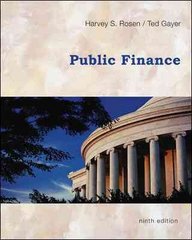
(55 points) There are two firms, each of which can produce any quantity of a good at 0 cost. Firm 1 is the incumbent operating in the market. Firm 2 is considering entering the market. Entry is costly for firm 2 and the cost is some known c> 0. Market demand is given by p = A - 4, where A is the level of advertising and q = 91 +92 is the aggregate amount of the good produced (the sum of the amounts both firms produce). If the firms produce more than A, that is, if q> A, then the price is p = 0. The game proceeds as follows. First, firm 1 decides on the level of advertising A 0 and pays 2A/54. Firm 2 observes A and decides whether to enter the market. If firm 2 enters, it pays the entry cost c> 0 and the two firms engage in Cournot competition (firm 1 chooses qa and firm 2 chooses 92, simultaneously). If firm 2 does not enter, then firm 1 produces as a monopolist in the market. (a) (10 points) Draw the game in extensive form. (b) (10 points) What is each firm's set of strategies ? (c) (10 points) Suppose that c= 0. Solve for a subgame-perfect equilibrium. Hint: this is very similar to the advertising application we saw in class. (d) (15 points) Suppose that c> 0. Solve for a subgame-perfect equilibrium. Hint: Firm 1 wants to choose A to be as high as possible while keeping it low enough to convince firm 2 to stay out of the market. Therefore, in a subgame-perfect equilibrium firm 2 must be indifferent between entering and not entering (you can use this observation without proving it). () (10 points) Suppose that c > 0. Find another Nash equilibrium that is not subgame perfect. (55 points) There are two firms, each of which can produce any quantity of a good at 0 cost. Firm 1 is the incumbent operating in the market. Firm 2 is considering entering the market. Entry is costly for firm 2 and the cost is some known c> 0. Market demand is given by p = A - 4, where A is the level of advertising and q = 91 +92 is the aggregate amount of the good produced (the sum of the amounts both firms produce). If the firms produce more than A, that is, if q> A, then the price is p = 0. The game proceeds as follows. First, firm 1 decides on the level of advertising A 0 and pays 2A/54. Firm 2 observes A and decides whether to enter the market. If firm 2 enters, it pays the entry cost c> 0 and the two firms engage in Cournot competition (firm 1 chooses qa and firm 2 chooses 92, simultaneously). If firm 2 does not enter, then firm 1 produces as a monopolist in the market. (a) (10 points) Draw the game in extensive form. (b) (10 points) What is each firm's set of strategies ? (c) (10 points) Suppose that c= 0. Solve for a subgame-perfect equilibrium. Hint: this is very similar to the advertising application we saw in class. (d) (15 points) Suppose that c> 0. Solve for a subgame-perfect equilibrium. Hint: Firm 1 wants to choose A to be as high as possible while keeping it low enough to convince firm 2 to stay out of the market. Therefore, in a subgame-perfect equilibrium firm 2 must be indifferent between entering and not entering (you can use this observation without proving it). () (10 points) Suppose that c > 0. Find another Nash equilibrium that is not subgame perfect







